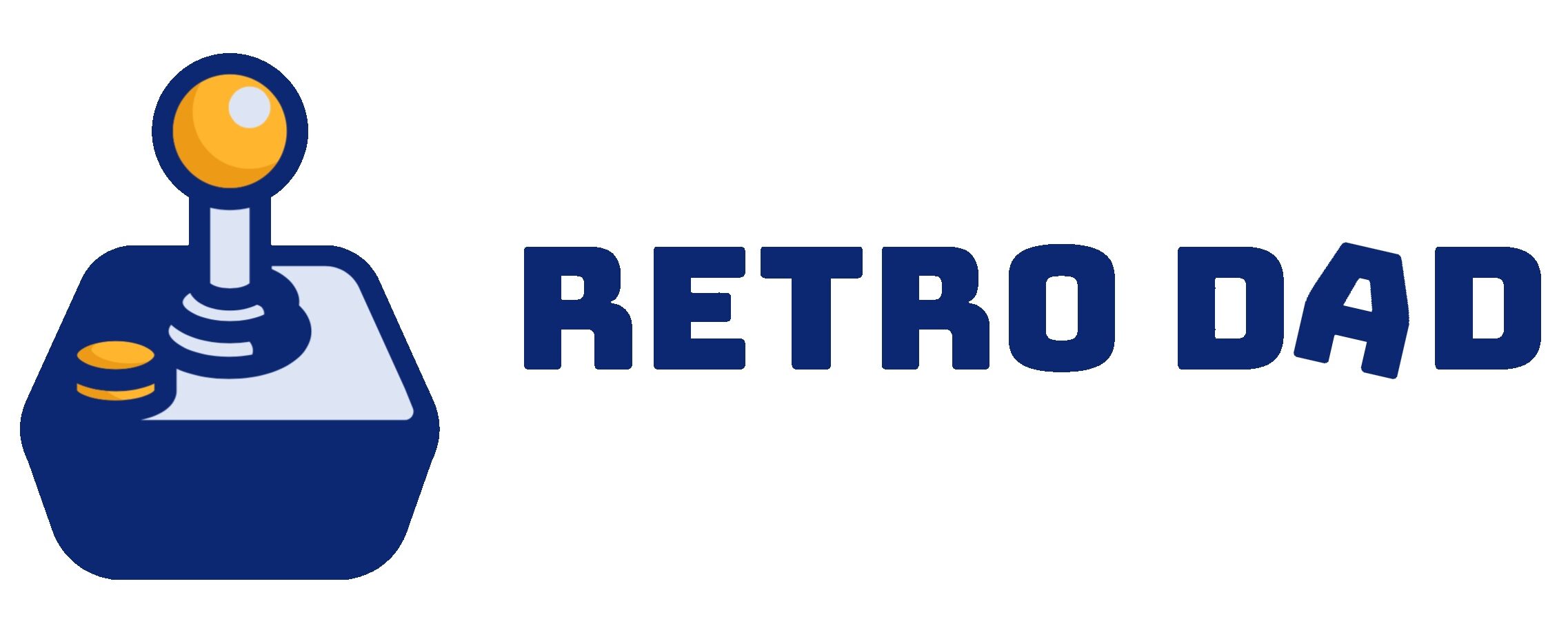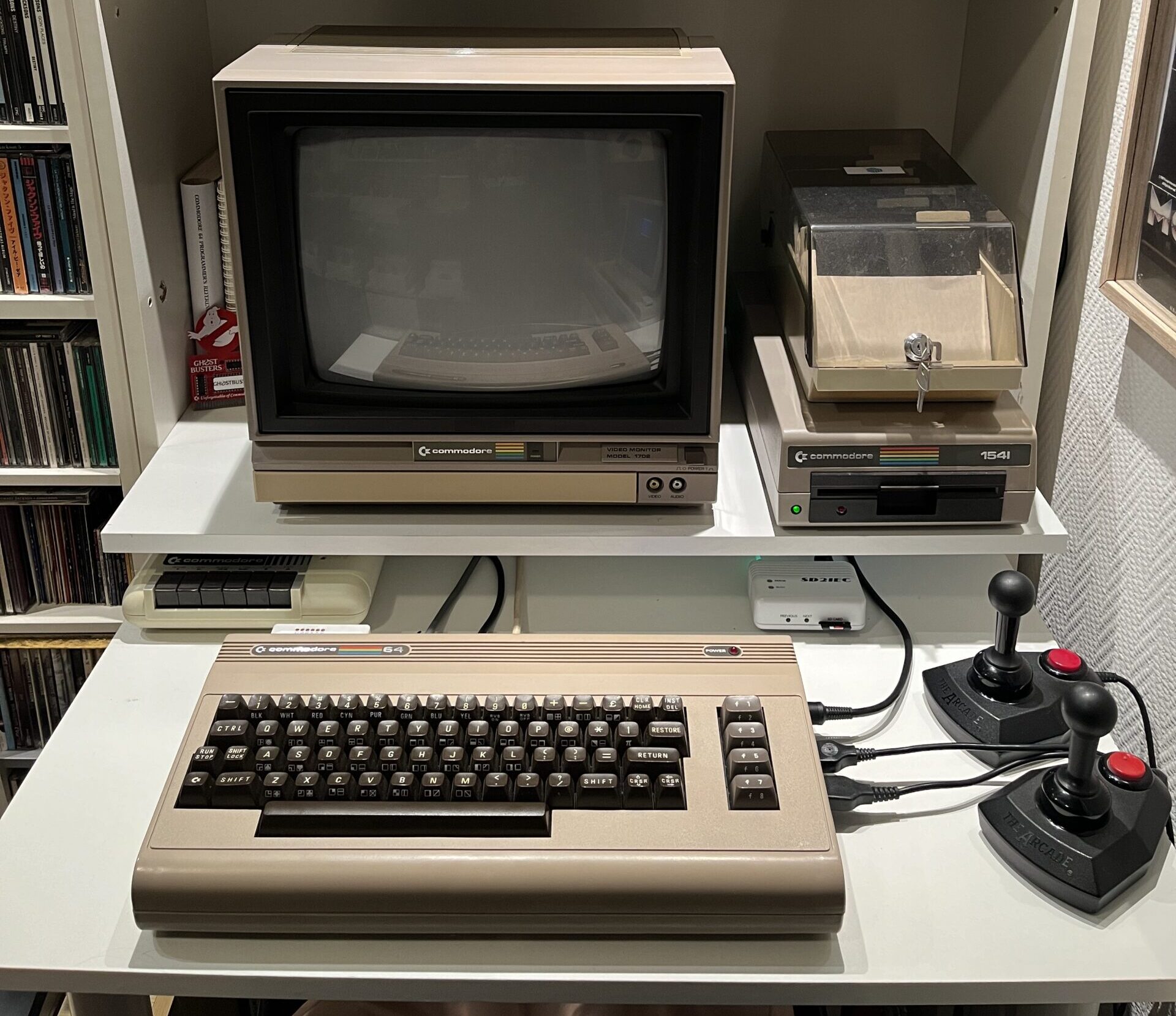Recently, I embarked on a journey back to the roots of personal computing by reacquiring a piece of my childhood—a Commodore 64. After visiting two retro computer museums, my enthusiasm for the C64 was reignited. Having not used a Commodore 64 for over 35 years (or was that 40?), this iconic machine is now back in my life, bringing with it a flood of memories and a renewed sense of excitement.
The Quest for a Working C64
Rebuilding my Commodore 64 was no small feat. I aimed to recreate the exact setup I had as a kid, which meant sourcing a ‘breadbin’ model C64 complete with a tapedeck and floppy drive. The first step was to get a working unit. As it turns out, finding a fully functional Commodore 64 in 2024 is like finding a needle in a haystack. After scouring various online marketplaces, I finally secured three broken Commodore 64 units. Combining the functional parts from each, I managed to create one operational machine. It was a labor of love, with a few frustrating moments, but seeing that familiar blue startup screen flicker to life was worth every second of effort.
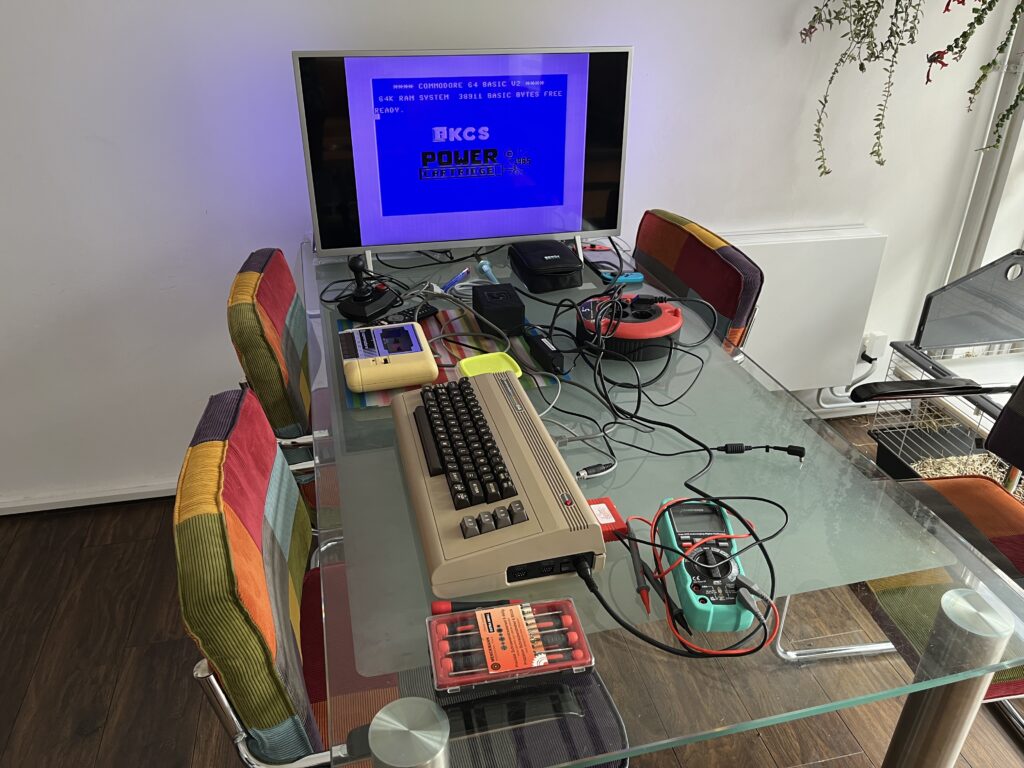
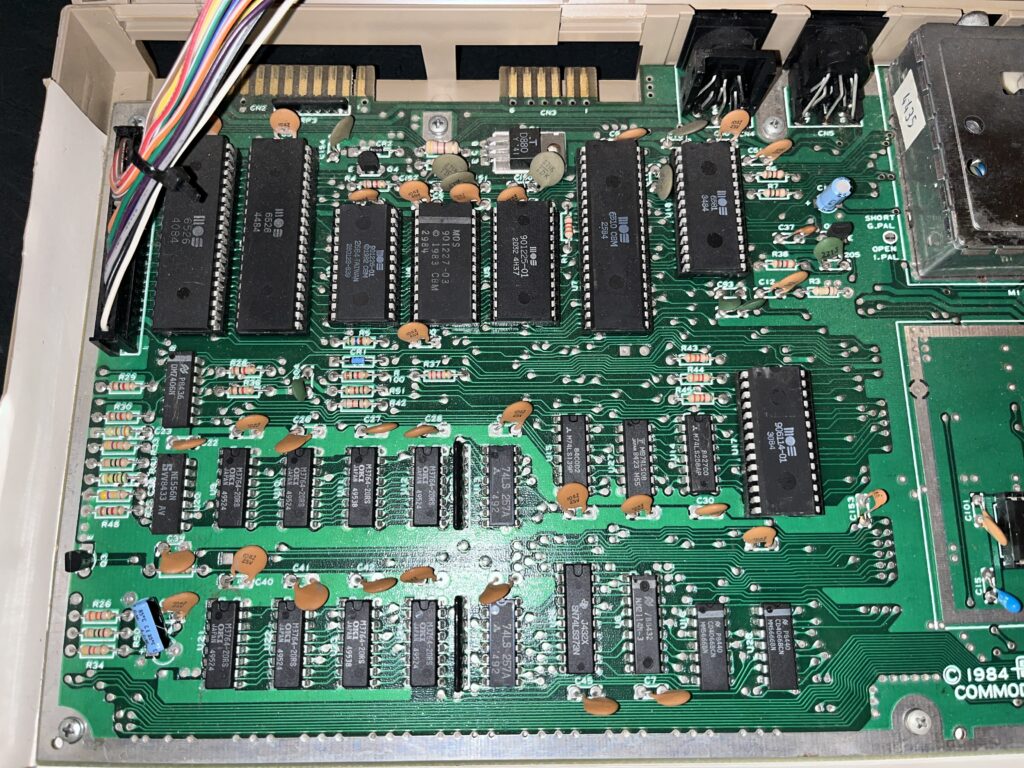
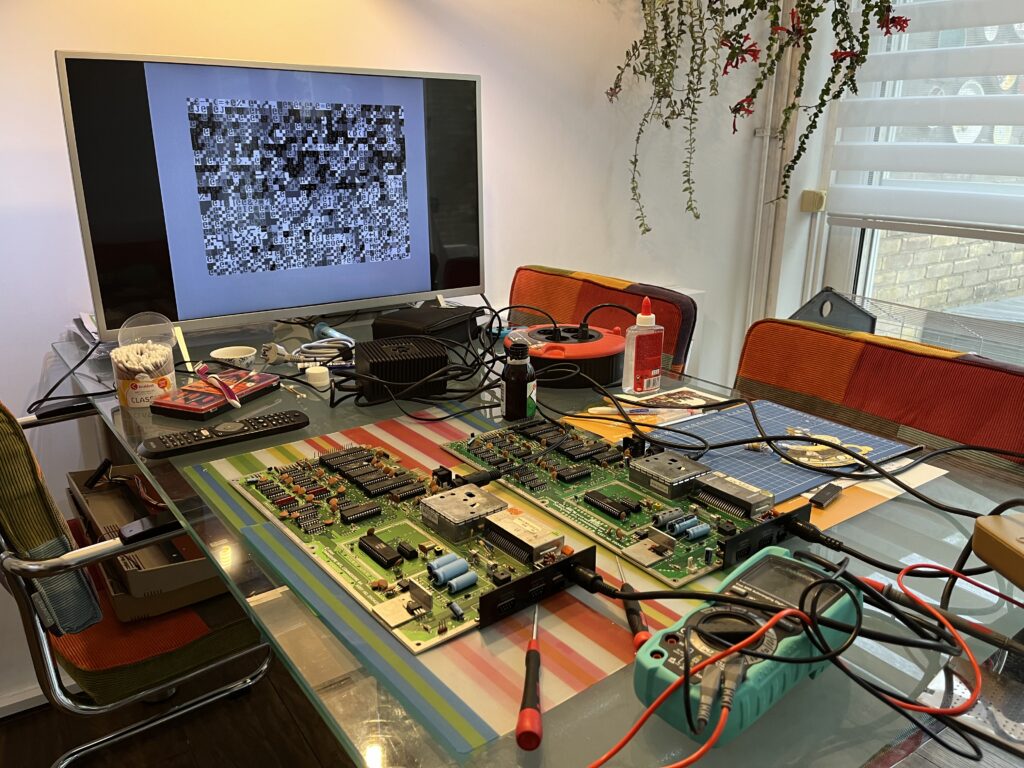
The Complete Set: Tape Drive, Disk Drive, and Monitor
To recreate the full experience, I needed more than just the computer itself. A tape drive and a disk drive were essential components back in the day, and I was determined to include them in my setup. Thankfully, I found both in decent condition. The nostalgia hit hard as I loaded up software the old-fashioned way, the familiar whirring and clicking sounds transporting me back to my youth.
A few weeks into my project, I realized I was missing one crucial piece: a proper monitor. The Commodore 1702 monitor, known for its excellent picture quality and compatibility, was the perfect choice. After some searching, I found one in great condition. The only this missing was the front door. Those things are very hard to get these days, so for now I had to settle with a 3D printed replica. With the monitor in place, my setup was complete, and I felt like I had stepped back in time.
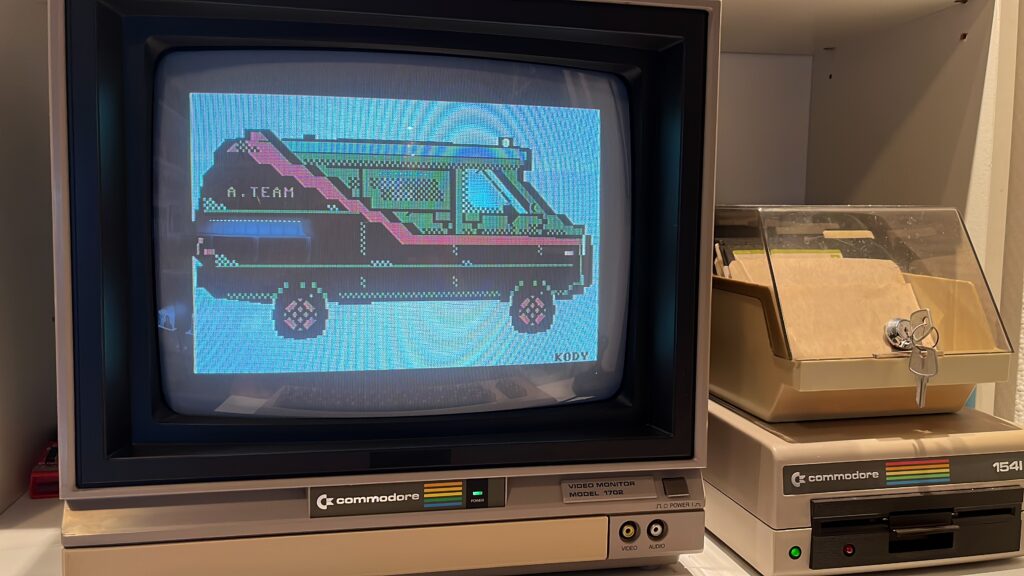
Modern Upgrades: Kungfu-Flash and SD2IEC
While I wanted to preserve the authentic experience, I couldn’t resist adding a couple of modern conveniences. The Kungfu-Flash and SD2IEC devices were perfect additions, providing the best of both worlds. The Kungfu-Flash cartridge allows me to load games and software from a single flash drive, eliminating the need for cumbersome floppy disks. Meanwhile, the SD2IEC adapter enables me to use SD cards as a modern substitute for floppy disks, making it easier to manage and transfer data.
Reliving the Magic
Sitting in front of my newly rebuilt Commodore 64, with its tape drive, disk drive, and 1702 monitor, I felt a wave of nostalgia wash over me. The tactile sensation of the keyboard, the simplicity of the graphics, and the charm of 8-bit sound were all reminders of a simpler time. The modern additions of Kungfu-Flash and SD2IEC brought a seamless convenience, ensuring I could enjoy this vintage machine without compromising on usability.
Reconnecting with the Commodore 64 has been a fulfilling journey, blending the magic of the past with the practicality of the present. For anyone who grew up with this legendary computer, I highly recommend taking a similar trip down memory lane. You might be surprised at how much joy an old friend can still bring.

